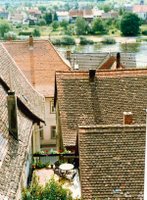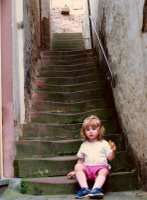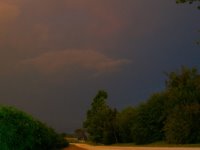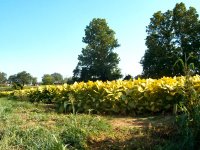Another Trip Down Memory Lane... Life in The Nebraska Sandhills... The Rural Life...
When I look back at my childhood, I realize that we led a quiet, isolated life. I suppose many Sandhills families of that day did. Our ranch was 28 miles south of Bassett, then four miles west, and finally about two miles south. The first 28 miles were on a state highway, the next five miles were county gravel roads, and the last mile or so was a ranch road.
By Sandhill standards, Duff Valley and the low-lying lands adjoining the Skull and Bloody creeks were well-populated. Our nearest neighbors on the county road were
John Seier and his grown-up son and daughter who lived with him. Their house was about a mile and a half north of us. Our nearest neighbors over the hills by sandy ranch roads were Jay and Martha Hixson on the Ray Ranch about three miles south of us.
I attended
Duff Valley District 4, a one-room country school with the neighbor kids. When I say "the neighbor kids", I really mean the Horner girls, Velda and Carolyn. A few other children came and went at school, but the Horner girls and I were together from first grade through eighth grade. Velda and I were in the same grade and Carolyn was one grade below us. Some years, we three and our little sisters were the only pupils in our school.
After the school year ended in mid-May, I rarely saw the Horner girls or any other children except at church on Sundays. Nor did we talk to each other on the telephone. Our parents didn't permit that. We shared a party line with twenty other families, and people did not appreciate the line being tied up by children giggling to each other.
Summer was the season for making hay and every ranch was busy with it. Sometimes when
the hayfield was too wet to work, a neighbor on his way to check his pastures would stop to visit with my dad. A cattle-feed salesman might find his way to the ranch hoping to get an order. We made quick trips to town for machinery parts. My mother sometimes went to "Missionary Society" or the extension club meeting and took us girls along. But many days, we didn't see anyone except for our own family and the hired men we had living with us.
Television reception out south of Bassett wasn't very good so we didn't have a TV. I think the nearest stations were in Grand Island, North Platte, and Norfolk (some of Nebraska's larger towns, all distant from us).
My mother enjoyed the radio, particularly the news reports and her favorite preachers, and I understand now that they gave her something to think about while she was working. I still remember the stations that were her favorites: KRVN from Lexington, WNAX from Yankton, South Dakota, and KJLT from North Platte.
When the day's work was done and there was time to relax after supper, I think everyone in my family read. My dad's rocking chair sat next to a bookcase that was stacked with farming and cattle breed magazines,
Popular Mechanics, all sorts of newspapers, and various manuals. My mother read books occasionally, but she was an avid daily consumer of the newspapers. We kids read the newspapers, the magazines, and every book we could get our hands on.
We always subscribed to the
Omaha World Herald and a daily livestock journal from Omaha (now defunct and I can't recall its name), four or five weekly papers from local towns plus other regional papers like the
Western Livestock Journal and
Cappers Weekly. There was never a shortage of newsprint at our house.
Some of the magazines I remember regularly looking at and reading sections of were
Life,
Farm Journal,
Successful Farming,
Nebraska Farmer,
National Geographic, and
Call to Prayer. And then there were the mail-order catalogs from Sears Roebuck, Montgomery Ward, Spiegel, and Aldens. They provided many hours of looking and reading.
We all read the comic strips every day. I was very worried at times about Little Orphan Annie who was trapped in a cave or locked in a dungeon. I could hardly wait to get the next newspaper to see whether she would be rescued before the water got too high. I knew exactly what adventures Dick Tracy, Winnie Winkle, Mary Worth, Li'l Abner, Alley Oop, Terry and the Pirates, and even Prince Valiant were having (though the Prince was only in the Sunday paper which didn't arrive until Monday as I recall). Ann Landers was interesting, and Heloise's household hints were readable if nothing better was available.
My little sister and I rode Beauty, the Shetland pony
, to the mailbox many summer afternoons. Oh, she was
a mean little brat. She tried to run under the trees and scrape us off her back, and she loved to turn her head and bite our feet. One day, we were trying to ride her across the meadow so we could get to the mailbox faster, and she went out in the middle of a little pond and lay down. All of this was very frustrating to two little girls who just wanted to read the funnies.
When I was about ten years old, I discovered what a joy it was to send and receive letters. I had a penpal from Orion, Illinois, whose name I found in the "Just for Kids" section of the daily livestock newspaper. I wrote to her regularly for about five years. When I was a teenager, I wrote nearly every day all summer long to my long-time friend, Sammie, who has commented here on the blog a few times.
My mother was a prolific letter writer, and she carried on correspondences with many relatives and friends and even some missionaries in foreign lands. Our mail often had several hand-written letters along with the business envelopes. Even the hired men looked forward to the mail because they sometimes got letters from their girlfriends.
Perhaps you can imagine that the mail was the highlight of a homebound summer day to me -- and to all of us, I think. The mail brought variety to our lives and contact with the greater world, the wide world beyond the ranch, beyond the Sandhills and beyond Nebraska.
In an undetermined location (
somewhere!?), I have a little square Brownie photograph that my sister must have taken. I'm a young teenager and I'm opening our mailbox. Most people wouldn't look twice at that simple snapshot, but I recognize now that it's quite symbolic of my childhood years on the ranch.
UPDATE: October 19, 2006. I finally found the photo so here it is.

Technorati tags:
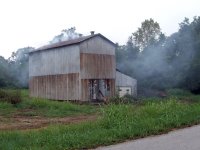

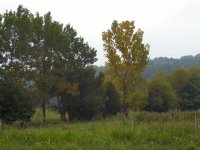
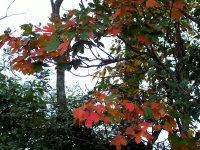
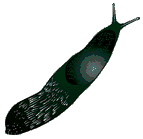 When we first moved out here, the slugs were everywhere, and there were lots of them. It was impossible to walk outside at night without stepping on them. One night I forgot and went outside barefoot. I felt a slug under one foot, recoiled in disgust, and stepped on another slug with my other foot.
When we first moved out here, the slugs were everywhere, and there were lots of them. It was impossible to walk outside at night without stepping on them. One night I forgot and went outside barefoot. I felt a slug under one foot, recoiled in disgust, and stepped on another slug with my other foot.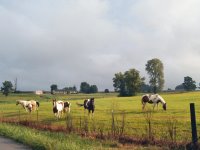
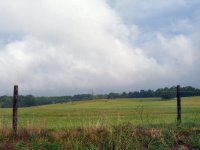
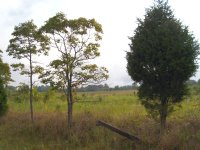
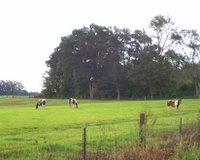
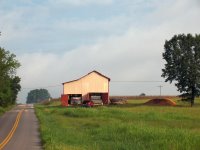
 Several years ago, I gave a winning eBay bid of about $100 for a new 9x13', 2-room, Coleman Forester tent. It's been a great tent. It's spacious , it has enough headroom that I can stand (always a handy feature in a tent) and it has never leaked even while tents around us became wading pools.
Several years ago, I gave a winning eBay bid of about $100 for a new 9x13', 2-room, Coleman Forester tent. It's been a great tent. It's spacious , it has enough headroom that I can stand (always a handy feature in a tent) and it has never leaked even while tents around us became wading pools.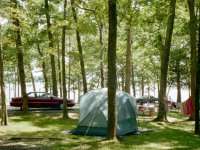










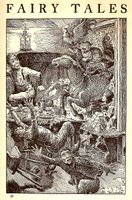



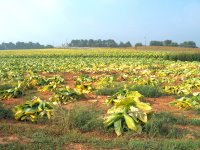
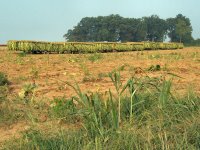
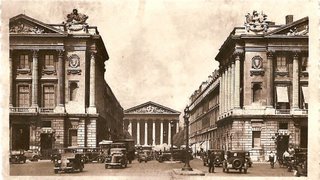
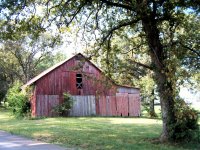
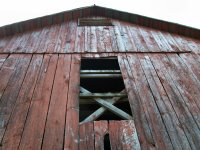
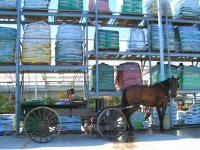
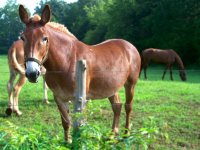
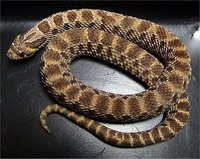
 Of course I had a lunchbox -- a round-top metal box that swung open from the middle. The top half held a Thermos, and the bottom had plenty of room for a sandwich, fruit, and cookies.
Of course I had a lunchbox -- a round-top metal box that swung open from the middle. The top half held a Thermos, and the bottom had plenty of room for a sandwich, fruit, and cookies.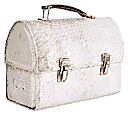 I remember owning several silver lunchboxes. The Horner girls, my perpetual schoolmates, had a black lunchbox that they shared. When my little sister started school, I think she had a square red-plaid box. If we still had our lunchboxes, they would still have a little value as vintage pieces, despite dents, rust, and scratches
I remember owning several silver lunchboxes. The Horner girls, my perpetual schoolmates, had a black lunchbox that they shared. When my little sister started school, I think she had a square red-plaid box. If we still had our lunchboxes, they would still have a little value as vintage pieces, despite dents, rust, and scratches